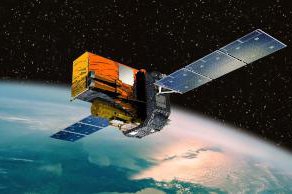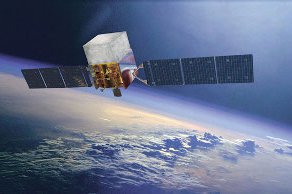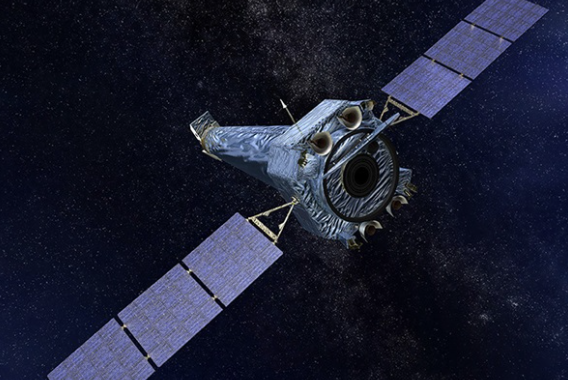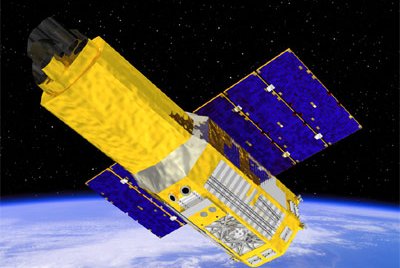Equipment of space missions, which data are available at the Centre

INTEGRAL (INTErnational Gamma-Ray Astrophysics Laboratory)
The space mission of the European Space Agency (ESA) INTEGRAL (INTernational Gamma-Ray Astrophysics Laboratory), launched in October 2002, is intended for the study of high-energy processes in astronomical objects accompanied by the generation of hard X-ray and gamma-ray emission. Among them, there are relativistic jets and accretion disks in active galactic nuclei, Supernovae and Supernova remnants, cosmological gamma-ray bursts, etc. The INTEGRAL mission toolkit includes:
- SPI spectrometer for spectral analysis of point sources of gamma-ray emission in the range of 20 keV – 8 MeV with an energy separation of 2 keV @ 1 MeV;
- IBIS Imager telescope in the range of 15 keV – 10 MeV with a field of view of 8.3 x 8.0 deg and an angular resolution of 12 arcmin;
- X-ray monitor JEM-X, which will perform simultaneous observations with the main (SPI and IBIS) gamma-ray telescopes in the range of 3–35 keV with a field of view of 4.8 deg, an angular resolution of 3 arcmin and with an energy resolution of 1.3 keV @ 10 keV;
an OMS optical monitoring camera consisting of a 50 mm lens and a CCD camera (image area = 1024 x 1024 pixels) with a wavelength range of 500–600 nm (Johnson V-filter), with a field of view of 5x5 deg and with an angular separation of 23 arcsec.

XMM-Newton (X-ray Multi-Mirror Mission)
The space mission of the European Space Agency (ESA) XMM-Newton (X-ray Multi-Mirror Mission) was launched in December 1999 and is designed to study the X-ray emission of astronomical objects. The X-ray range opens a new window in the study of high-energy processes accompanied by the generation of thermal and non-thermal X-ray emission in astrophysical processes of various scales – from solar flares to galaxy clusters and cosmological gamma-ray bursts.
The XMM-Newton mission includes three types of detectors
- Spectrometer with a reflection grating (Reflection Grating Spectrometer (RGS)) consisting of two identical spectrometers for high-resolution X-ray spectroscopy and spectrophotometry with a bandwidth of 0.35–2.5 keV, a field of view of 5 arcmin, a spectral resolution of 3.2/2.0 (in -1/ -2 order) eV @ 1keV;
- European Photon Imaging Camera (EPIC) consisting of 3 CCD cameras for X-ray imaging, moderate resolution spectroscopy, and X-ray photometry. Of them, 2 MOS (Metal Oxide Semi-conductor) cameras and one pn camera with bandwidths of 0.15–12 keV, the field of view of 30 arcmin, spectral resolution of 70–80 eV @ 1keV;
- Optical monitor (OM) for the optical/UV imaging and grating prism (grism) spectroscopy with a bandwidth of 180–600 nm, a field of view of 17 arcmin, a resolving power λ/Δλ=180.

Fermi Gamma-ray Space Telescope (FGST)
The Fermi Gamma-ray Space Telescope (FGST, formerly called the Gamma-ray Large Area Space Telescope, GLAST) is an international and multi-agency space mission, launched in June 2008 and designed for the investigation of high-energy processes in the Universe, accompanied by the generation of the most energetic electromagnetic radiation – gamma-ray emission – with the maximum energy up to 1 TeV. Physical conditions in cosmic TeVatrons – accelerators of cosmic rays up to multi-TeV energies – are beyond the cutting edge of the Standard Theory. Among them, there are relativistic jets and accretion disks in active galactic nuclei, Supernovae and Supernova remnants, cosmological gamma-ray bursts, etc.
The Fermi Gamma-ray Space Telescope includes two scientific instruments:
- Large Area Telescope (LAT), an imaging gamma-ray detector (with converting of photon to electron-positron pair and recovering of initial photon trajectory and energy from microstrip detectors’ and scintillator calorimeter data, correspondingly) in 20 MeV – 300 GeV range with a field of view ~ 20% of the sky and the whole sky scanning every three hours. Fermi LAT performance (after 10 years of operation, Pass 8 Release 3 Version 3): effective area ~ 0.9 m2, acceptance (the effective area integrated over the solid angle) ~ 2.5 m2·sr at 1–1000 GeV, PSF (68% containment) at E>100 GeV of 0.1 deg, energy resolution ΔE/E (68% containment) of 0.06 @ 10GeV.
- Gamma-ray Burst Monitor (GBM) is designed for the study of transient sources: gamma-ray bursts (GRB) and solar flares across the whole of the sky not occluded by the Earth and consists of 14 scintillation detectors (twelve sodium iodide crystals for the 8 keV to 1 MeV range and two bismuth germanate crystals for 150 keV to 30 MeV). Fermi GBM performance: energy range 8 keV – 30 MeV, energy resolution ΔE/E<0.1 (68% containment for 0.1–1 MeV), burst sensitivity < 0.5 cm-2 s-1 (50–300 keV), final GRB location ~ 3 deg.

Chandra X-ray Observatory
NASA's Chandra X-ray Observatory, named the Advanced X-ray Astrophysics Facility (AXAF) was launched in July 1999 (renamed in December 1998). Due to its exceptional sensitivity and high angular resolution in the X-ray band, Chandra belongs to the Flagship-class space telescopes. Regardless of an expected lifetime of 5 years Chandra is still active and provides unique information about high-energy processes in the Universe, including imaging of circumpulsar regions in the Crab nebula and dark matter dominated Bullet cluster, X-ray emission from SMBH Sagittarius A*and from the shock wave of SN 1987A, etc.
Chandra X-ray mirror is made in the form of the Chandra High-Resolution Mirror Assembly (HRMA), which consists of a set of 4 concentric Wolter Type-I X-ray optics. Each of them (mirror pair) has a paraboloidal primary mirror and a hyperboloidal secondary mirror. To be focused by the HRMA, X-rays reflect first from a paraboloidal mirror, then from a hyperboloidal mirror. The largest mirror pair has a diameter of ∼ 1.2 m, the smallest ∼ 0.6 m. The focal length of HRMA is 10 m, the field of view is 1deg (FWHM) in diameter, and the clear aperture is 0.1136 m2.
Chandra is equipped with four science instruments.
The two focal plane instruments are mounted on the Science Instrument Module (SIM):
- The Chandra Advanced CCD Imaging Spectrometer (ACIS), which has two arrays of CCDs and can simultaneously make wide-field (16x16 arcmin) X-ray images and measure the energy of each incoming X-ray photon;
- The High-Resolution Camera (HRC), which comprises two micro-channel plate imaging detectors and can make X-ray images with high angular (0.5 arcsec) and temporal (16 msec) resolution.
Two more Chandra scientific instruments are dedicated to high-resolution spectroscopy if they are installed into the X-ray beam behind the mirrors:
- the Low Energy Transmission Grating Spectrometer (LETGS) with a freestanding gold grating with a period of 1µm, designed to cover an energy range of 0.08 to 2 keV with the spectral resolving power (E/ΔE>1000) at low energies (0.07–0.2 keV);
the High Energy Transmission Grating Spectrometer (HETGS) with gold gratings with finer periods (0.2 µm for the high-energy and 0.4 µm for the medium energy gratings), designed to cover an energy range of 0.4 to 10 keV with the variable spectral resolving power E/ΔE~ 800@1.5 keV and E/ΔE~ 200@6 keV.

Suzaku
Suzaku (formerly ASTRO-EII) is an X-ray astronomy mission that was jointly developed by the Institute of Space and Astronautical Science of Japan Aerospace Exploration Agency (ISAS/JAXA), along with U.S. institutions such as NASA/GSFC and MIT. After its successful launched on 10 July 2005, the satellite was renamed Suzaku.
Suzaku was equipped with instruments capable of high spectroscopic resolution and covering a wide energy range 0.3–600 keV. Suzaku is outfitted with three primary instruments, two of which are co-aligned.
- The X-ray Imaging Spectrometer (XIS) comprises 4 imaging CCD cameras (XIS0, XIS2 and XIS3 are front-illuminated, XIS1 is a back-illuminated chip) that are sensitive in the 0.2–12.0 keV range. Positioned at the focal plane of a dedicated X-ray telescope (XRT), the XIS offers an energy resolution of 120 eV FWHM @ 6 keV and 50 eV FWHM @ 1 keV. Each sensor of the XIS provides an effective area of 400 cm2 @ 1.5 keV and 250 cm2 @ 6 keV. The XIS has a field of view measuring 19'x19' and offers full imaging capability. The spatial resolution of the X-ray Imaging Spectrometer (XIS) is ~ 1.8 arcmin as determined by HPD of XRT PSF.
- The Hard X-ray Detector (HXD) is a non-imaging, collimated and operates in the 10–600 keV range. HXDs consist of PIN diodes and the GSO sensor. The PIN diodes covering the energy range of ~10–70 keV, the GSO sensor being sensitive to 40–600 keV energies. Each sensor provides an effective area of 160 cm2 @ 15 keV and 300 cm2 @ 120 keV. The energy resolution is ~3 keV (in the 10–30 keV range) and 9% at 662 keV. The field of view is 0.56 deg x 0.56 deg for E< 100 keV and 4.6 deg x 4.6 deg for E>200 keV. Time resolution is 61μs and 31μs respectively.
The HXD includes the Wide-band All-sky Monitor (WAM), works in the energy range of ~ 50 keV-5 MeV with effective area 800 cm2 @ 100 keV/ 400 cm2 @ 1 MeV, designed to detect transient events such as gamma-ray bursts and solar flares. Time resolution is 15.625 ms or 31.25 ms for GRB, 1 s for All-Sky-Monitor.
- The X-ray Spectrometer (XRS) due to a series of cooling system malfunctions resulting in the complete evaporation of the liquid helium reservoir had to be shut down.
The official end of the mission was marked on September 2, 2015, when JAXA switched off the radio transmitters on board Suzaku.